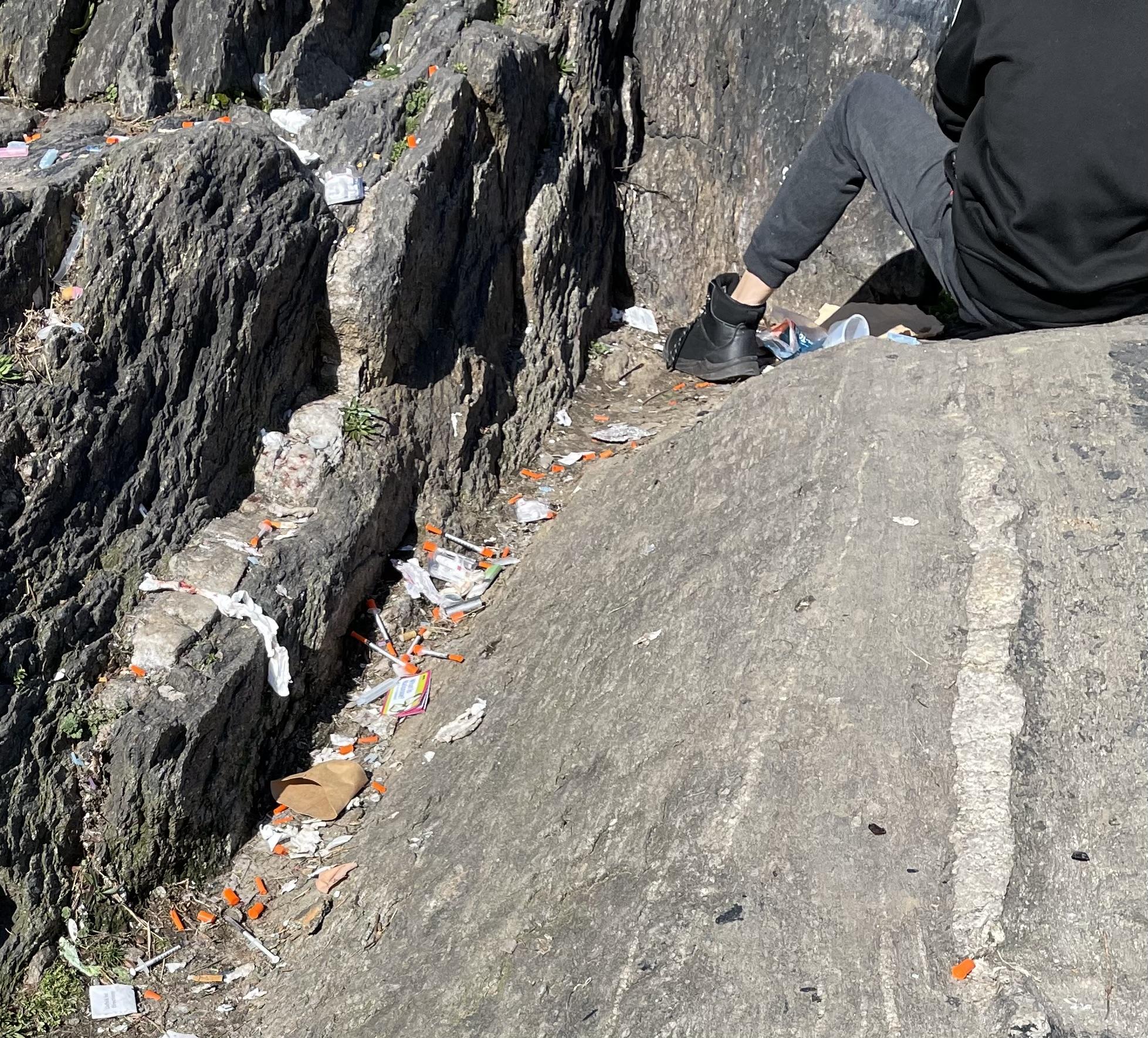Abandoned orange plastic caps, alcohol swabs and discarded needles are a familiar problem in St. Mary’s, the South Bronx’s largest park.
The newest proposed solution? Money in exchange for dirty needles and syringes.
City Council member Diana Ayala (D-District 8) sponsored a bill in 2022 that would pay up to $10 a day per person in exchange for the return of used needles and syringes. The bill authorized the Department of Health and Mental Hygiene to offer 20 cents per returned item in a program that would be rolled out as a pilot in five high-need City Council districts. The bill was passed by the City Council a little over a year ago, but was never signed by Mayor Eric Adams.
After 30 days, per city rules, the bill became law – although it has yet to be implemented and there is no clear timeline on when the program will begin, according to Ayala.
According to the parameters of the original bill, the program will expire a year after implementation, and the health department will have six months to submit a report detailing the names and locations of buyback participants, a breakdown of paraphernalia returned by location, total money disbursed and a recommendation on whether to discontinue the program or expand it. The health department must also create a community-based plan of action to address the opioid epidemic in communities deemed at highest risk for opioid abuse and death, which includes the South Bronx.
According to Ayala and members of the community, St. Mary’s Park’s north side, which is flanked by three middle schools, is where the worst of the drug use happens. Students from the area often cut through the park as a shortcut. A recently renovated playground there is crowded after school and on the weekends.
On a recent visit to the park, some people were observed using syringes and needles to get high. They were clustered at the peak of a large rock formation on the park’s north side, which is in view of the playground. Cracks in the rocks are littered with trash and needles.
“You would never see this in Central Park,” said Carmen Santiago, a community advocate who has been fighting to clean up the park since 2016. “We just want to be treated like Manhattan.”
The city has responded to local’s complaints in the past, most notably in 2020, when needle disposal boxes were installed throughout St. Mary’s Park.
Three years later, the boxes were taken down. Community members said they had not been maintained by the city and were falling apart. In addition, they didn’t help reduce the park’s needle problem, according to Santiago, who led the effort to dismantle them.
New York has harm reduction programs in effect around the city that are meant to decrease the worst effects of recreational drug use, such as overdose and the transmission of disease.
Needle distribution programs are part of the strategy. They provide users with clean needles, saline, alcohol swabs and narcan, which can be administered to stop lethal overdoses. The various contents of these needle kits can be found strewn around St. Mary’s Park.
There are about a dozen methadone clinics or drug treatment centers in the South Bronx. Four of them are around 149th Street, which runs along the northern perimeter of the park.
The majority of clinics in the area are outpatient, meaning those being treated are free to come and go as they please. The concentration of treatment centers in the neighborhood contributes to the needles, syringes and other litter in St. Mary’s Park, according to some locals.
Ayala, whose district includes Mott Haven, Port Morris and East Harlem, acknowledges the concentration of treatment centers in the area, although she supports their harm reduction efforts.
“I don’t think the program itself is the problem,” Ayala said. “I think it’s the oversaturation and the fact that we’re not being as aggressive as we could be in addressing the drug dealing that happens around these spaces.”
Prior to the introduction of harm reduction strategies in the South Bronx, needle-sharing was common, along with high infection rates of HIV and Hepatitis B, said Ayala. Needle distribution and exchange programs have been effective in bringing those rates down, she said.
But the city was not prepared for the needle litter which came as a side effect of these programs, according to her. She hopes her money-for-needles pilot program will help remedy this.
In the meantime, cleanup efforts are being spearheaded by the community and non-profits. St. Ann’s Corner of Harm Reduction and OnPoint NYC are two organizations that send people to pick up discarded needles and provide outreach to addicted individuals in the park. Volunteers from the area have also come together to conduct coordinated cleanups.
Not everyone agrees that community groups should take on the job, especially in St. Mary’s, where local clean up crews say long-ago discarded needles can be embedded in the dirt, making them more difficult to spot and dangerous to remove.
“That’s the St. Mary’s Park director’s job in St. Mary’s maintenance. Staff get paid very nicely for that. Tell them to do their dang job!” said area resident and community garden advocate Mike Young.
The city’s Department of Parks and Recreation classified the cleanliness of the park as acceptable in its most recent inspections. The overall condition of the park is acceptable in all but the most impacted area around East 149th St, the inspections said.
At recent community council meetings with the NYPD’s 40th precinct, concerned residents have suggested more cameras, greater police presence and even police drone surveillance, but none of these ideas are being implemented at the moment.
“Resources are spread very thinly right now, so we’re doing the best that we can, but this is one of our areas of priority,” Ayala said “I don’t want my kids or anyone else’s kids going into a public space and running into a needle.”

